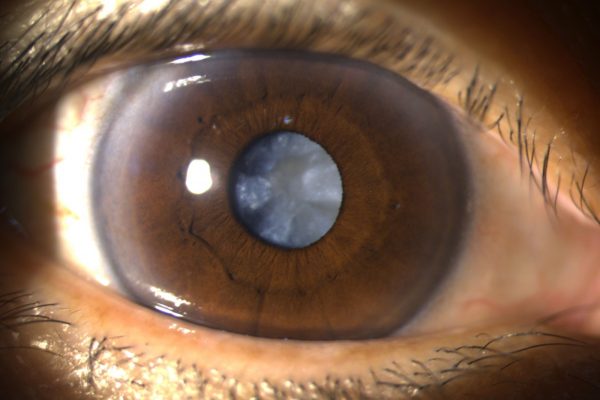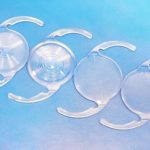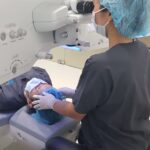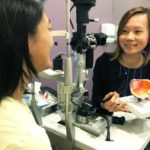Cataracts
What Are Cataracts?
In a normal eye, the natural lens is clear. This allows light rays to pass through and helps us to see clearly. When someone starts developing cataracts, their natural lens becomes cloudy.
That being said, as cataracts progress, vision becomes increasingly worse. As a result, daily activities such as watching television or reading newspapers may become challenging.
When deteriorating vision begins to affect one’s daily life, a cataract surgery may be recommended. This surgery is a 20-min procedure that removes the cloudy lens and also helps to correct myopia, astigmatism, and presbyopia.
Cataract Symptoms
Symptoms of cataracts include the following:
- Blurry or cloudy vision
- Seeing glares and haloes, especially in dimly lit areas
- Colours becoming more dull or less vibrant
- Sensitivity to light
- Frequent changes in glasses prescription
What Causes Cataracts?
The most common cause of cataracts is aging. Other, much less common, causes include genetic predisposition, certain medical conditions such as diabetes, usage of certain medications, damage from UV rays, and previous trauma to the eye.


In Singapore, 78.6% of people over 60 Years Old have cataracts
‘In Singapore, the percentage of elderly patients affected by cataracts is about 78.6%. The number of people affected increases as they get older (It affects 63.6% of people between 60 and 64 years, and 94.6% of people 75 years and older.)’ [1]
If you are in a higher risk group for cataract, it best to go for regular eye screening (every 6 to 12 months).
As per current regulations, cataract surgery is Medisave-claimable for an amount of up to $2,450 per eye. If your insurance policy covers cataract surgery, you may be able to claim the full amount. Check with your insurance agent for more details.
Different Types of Cataracts
There are three main types of cataracts. A person may develop one or more types.
- Nuclear (or nuclear sclerotic) cataracts form deep in the nucleus (central portion) of the lens. Oftentimes, they are caused by aging.
- Subcapsular cataracts form beneath the lens capsule. They can be caused by steroid medication use or diabetes.
- Cortical cataracts form in the lens cortex. They appear white and wedge-like.
When Should I go For Surgery?
In general, it is recommended that one goes for surgery when cataracts begin to cause inconvenience in one’s daily life. If you have been noticing increasingly worse symptoms, it is best to consult an eye specialist.
Do not wait too long to seek treatment. At the hypermature stage, cataracts become harder and more difficult to remove. As such, having surgery at a hypermature stage poses higher risks.
Is There Any Way To Prevent Cataracts? Are There Any Other Treatments?
There is no scientifically-proven way of preventing cataracts.
Currently, surgery is the only treatment option.
If you are interested to learn more about the surgery, head over to our cataract surgery page. There you can find more in-depth information regarding topics such as recovery time, surgical process, and choice of intraocular lens implants (IOLs).







Technology
ISEC believes in continuous innovation, we regularly update our medical technology according to the latest industry developments.
Touch
Rest assured in the hands of experienced doctors with many years of surgical experience, as well as seasoned nurses and optometrists.
Trust
ISEC’s reputation is one that has been built around experience and trust, as evidenced by our large pool of referral patients.
